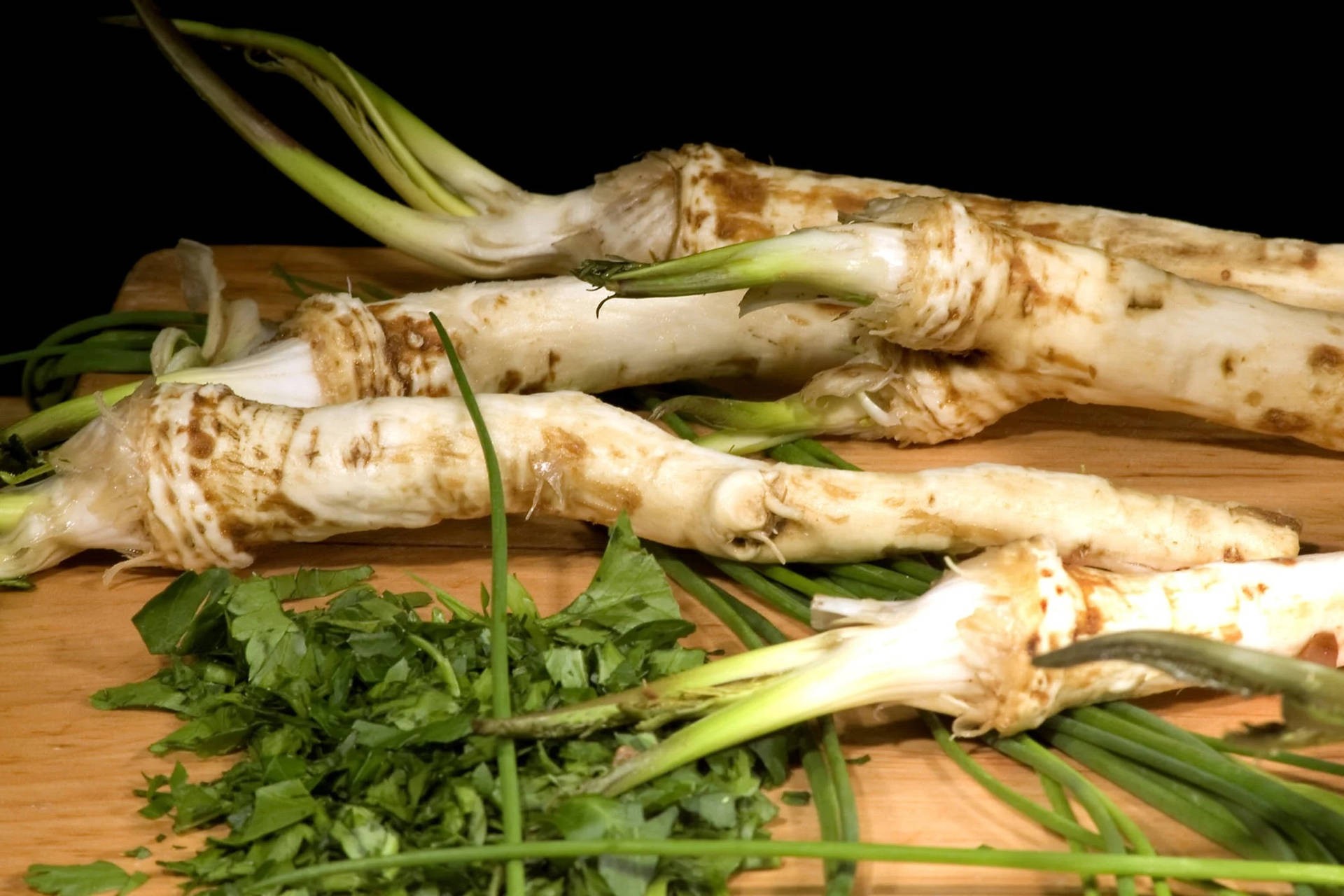
Horseradish (Armoracia rusticana) is a hardy perennial herb cultivated primarily for its large, tapered white root, which is renowned for its intense pungency and fiery flavor. The plant grows with tall, coarse, bright-green leaves that can reach up to 1.5 meters in height, while the root itself develops underground as a thick, cylindrical structure. When freshly grated or crushed, the root releases volatile compounds, most notably allyl isothiocyanate, which give it its sharp, sinus-clearing aroma and strong, peppery heat. In culinary traditions, horseradish is commonly transformed into a tangy condiment by mixing the grated root with vinegar, often served alongside roast meats, seafood, or pickled dishes to add depth and spice. Beyond the kitchen, horseradish has a history of medicinal use; it has been valued for its antimicrobial properties, its role in stimulating digestion, and its ability to clear nasal and respiratory passages. Thriving in temperate climates, it is a resilient plant that spreads vigorously if not carefully managed, making it both a flavorful and powerful herb with significant cultural and medicinal importance.